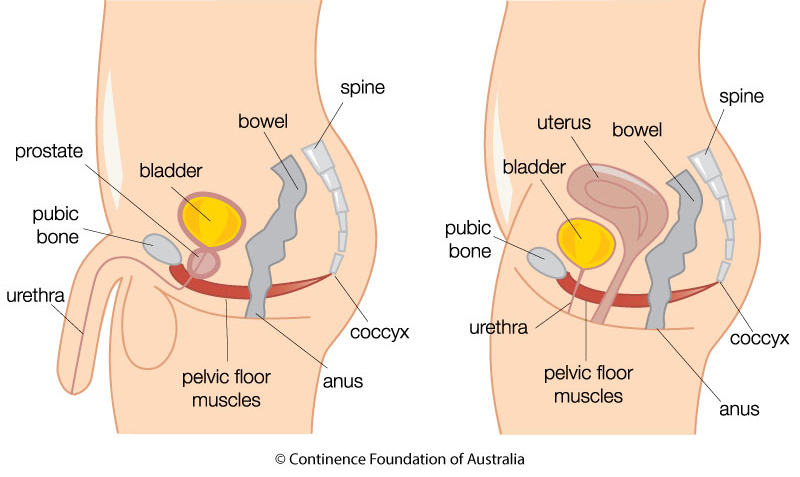
For most women, having a baby is a wonderful experience, and in New Zealand we are lucky to have good support through pregnancy and during the first weeks after childbirth.
The reality though, is that as time goes on many women struggle to regain strength and function of the pelvic floor. This can affect the ability to participate in exercise and recreational activities, and it can cause significant distress.
One in three women who have had a baby wet themselves. Half of all women have prolapse. Around 20% of women experience painful sex at some stage in their lives. These symptoms are common but they are not normal. You don’t need to put up with them!
Damage during vaginal delivery
Some women experience tearing of the perineum or need an episiotomy during labour. Some may experience trauma to the pelvic floor muscles or anal sphincter. For some, healing occurs with time and there are no ongoing issues. For others, unfortunately, this is not the case. Trauma to this area is not always evident at the time of delivery, but symptoms can develop over time – weeks, months or even years later.
But there is good news! If you learn how to strengthen your pelvic floor and you know what activities to be careful with during your daily life, you may well be able to prevent symptoms from developing, even if there has been some damage … and you won’t become a pelvic floor statistic!
It is never too late to start. Even if it is many years since you had a baby, you can still make a difference – reducing symptoms, or even preventing them from occurring in the first place.
What is the pelvic floor?
The pelvic floor muscles are a group of muscles that form a sling from your pubic bone at the front to your tailbone at the back.
These muscles help with:
- control of your bladder and bowel
- emptying of your bladder and bowel
- keeping your pelvic organs in the right place (bladder, bowel, uterus)
- sexual function
- control and stability of your pelvis and trunk (core strength)
We expect a lot from the pelvic floor muscles. They need to be strong enough to hold everything in, coordinated enough to let go in the right sequence at the right time for emptying the bladder and bowel, and flexible enough to allow penetration (to enable use of tampons, sexual activity and vaginal examinations).
How do I know if I have a problem?
Symptoms of pelvic floor dysfunction include:
- wet pants e.g. with coughing and sneezing
- not quite making it to the toilet in time
- problems with control of the bowel (including control of wind)
- pain with sex (seek help if this is happening as pelvic floor muscle relaxation or release may be required, not strengthening)
- feelings of heaviness or dragging around the vagina (possible prolapse)
What can I do about it?
There is good evidence that pelvic floor muscle training and advice on lifestyle modifications can help reduce leakage of urine, and improve symptoms of prolapse.
International guidelines now recommend that all women during pregnancy and after birth should be doing pelvic floor muscle exercises. Ideally, an experienced health professional would check that you are doing these correctly. Unfortunately there are financial barriers and lack of resources that prevent this from being standard practice in New Zealand, however you can teach yourself these exercises.

Pelvic floor exercises
- Sit up straight in a comfortable chair with shoulders, tummy and inner thighs relaxed. Try crossing your ankles to help with this.
- Squeeze and lift around your vagina as though you were holding around a tampon and trying to pull it further in. You should also feel a sensation of squeezing around the anus, and a lifting of the perineum (the skin between the vagina and the anus).
- There should also be a gentle drawing in of your lower abdominal muscles as you tighten your pelvic floor.You should not be feeling buttock squeezing, sucking in of your breath or flattening of your lower back.
- You should be able to feel the muscles relax when you let go. Initially try to hold for 2 to 3 seconds. Have a rest of 10 seconds in between and repeat this 5 to 6 times.
- Build up over time to 10 holds of 10 seconds each. Do this three times a day.
- If you are having trouble knowing whether or not you are doing this correctly, try using a mirror and look for the “squeeze and lift” action. If you are still unsure, get in touch with a pelvic floor physiotherapist.
Reduce pressure on your pelvic floor
- Coughing and sneezing – try to tighten your pelvic floor and lower abdominal muscles each time you do this.
- Heavy lifting – try to limit the weight, and use correct technique.
- Constipation and straining – ensure you have adequate fibre and fluid in your diet. Moderate exercise e.g. brisk walking, helps to keep things moving.
- Obesity – take care with weight gain as this affects your pelvic floor. Even a small loss of weight can make a big difference to bladder control.
- Safe exercise – women with pelvic floor muscle dysfunction need to take care with certain types of exercise.
Online resources
- Continence NZ – list of continence providers
- Physiotherapy NZ – find a physio
- Pelvic floor first – advice on pelvic floor safe exercise





